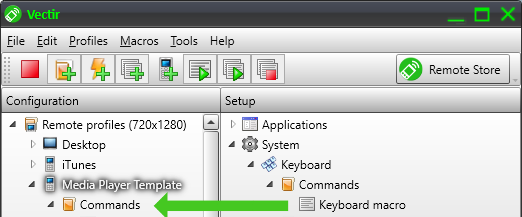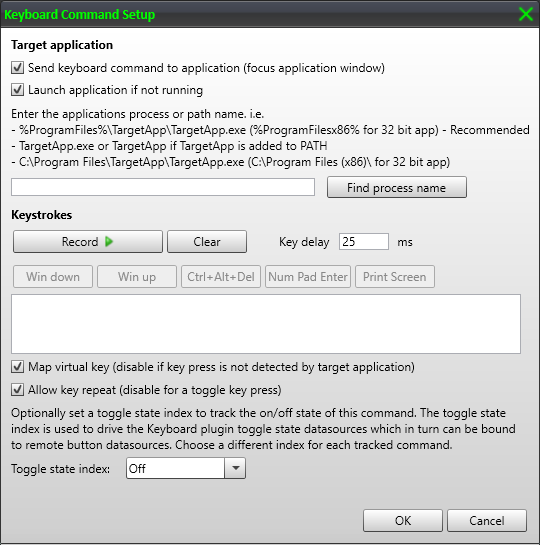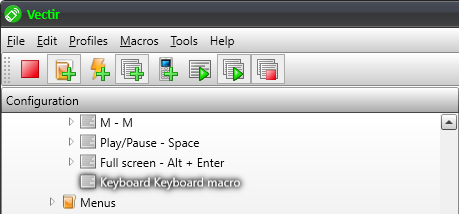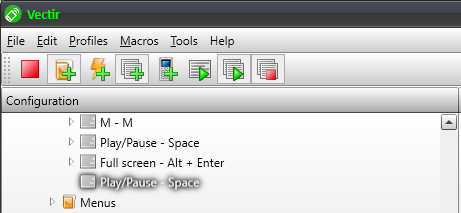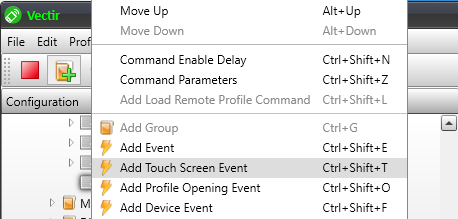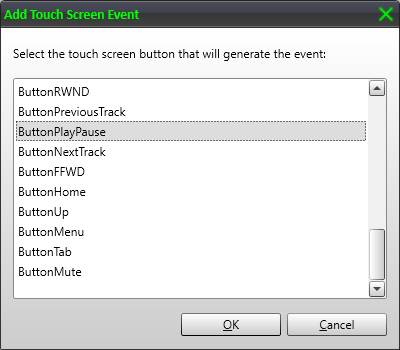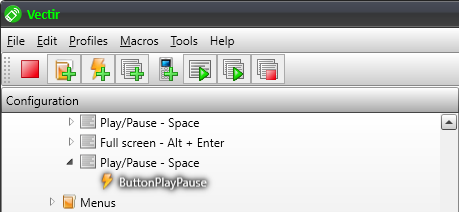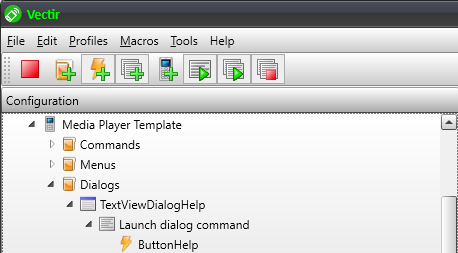Step 1: Add Remote Profile
To start with we are going to add a Vectir remote profile. To make life easier you may wish to install a Vectir remote profile template from the remote store. Click the Remote Store icon and choose between the "HTPC Template" and "Media Player Template". Use the preview button to decide with design best suits your application. You can customize the design at a later stage if you wish.
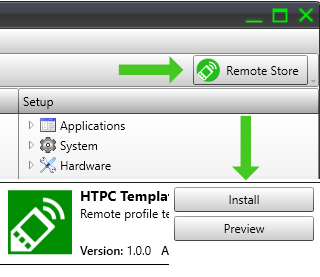
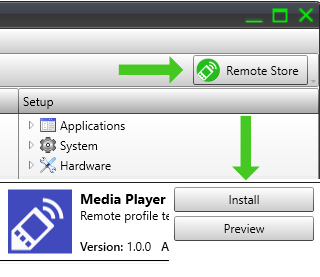
The remote profile templates include some keyboard commands which are already mapped (keyboard arrows, enter, space and esc for example). There are also some buttons in the remote design templates which are not mapped ready for your custom commands. The Media Player Template also includes a master volume slider already bound to the master volume datasink and source. The mute button is also mapped to the master volume mute command.
If none of the templates are suitable for your application, you can start from scratch by selecting 'Profiles' > 'Add Remote Profile'.
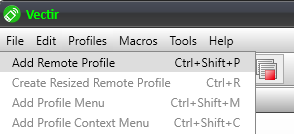
This will open the Remote Profile Designer. Add controls from the toolbox and create your own button graphics if you like.
Here is an example of the Media Player Template downloadable from the Vectir remote store:
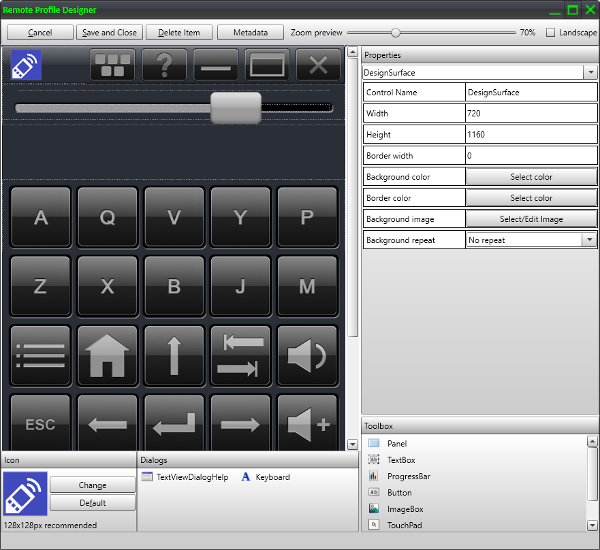
You can preview and edit this remote by right clicking on 'Media Player Template' in your remote profile folder in the Configuration panel and selecting 'Edit'.
